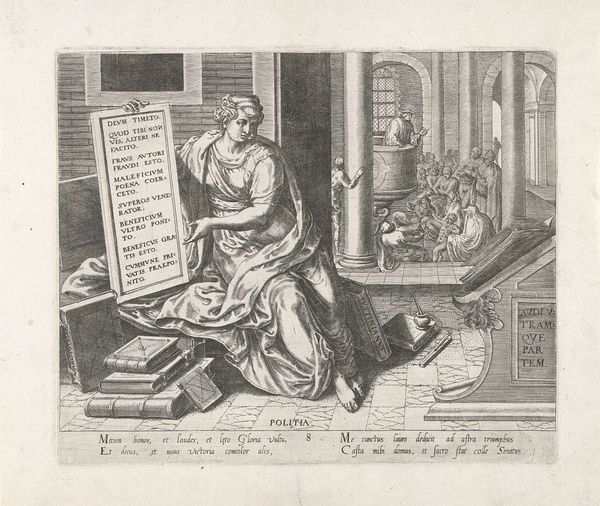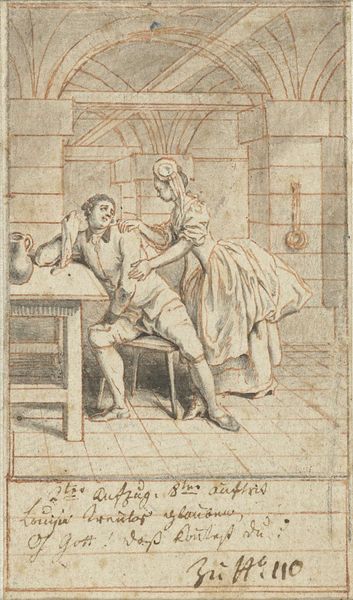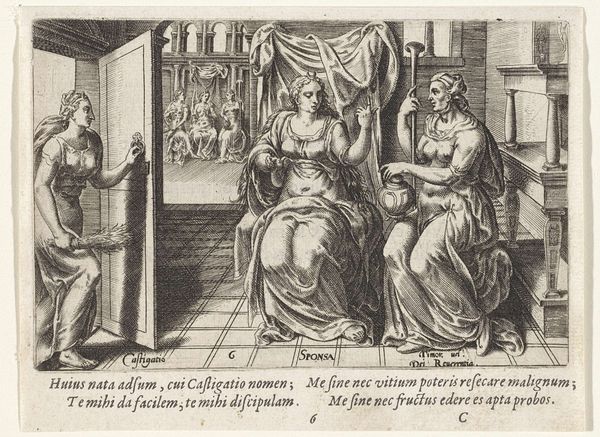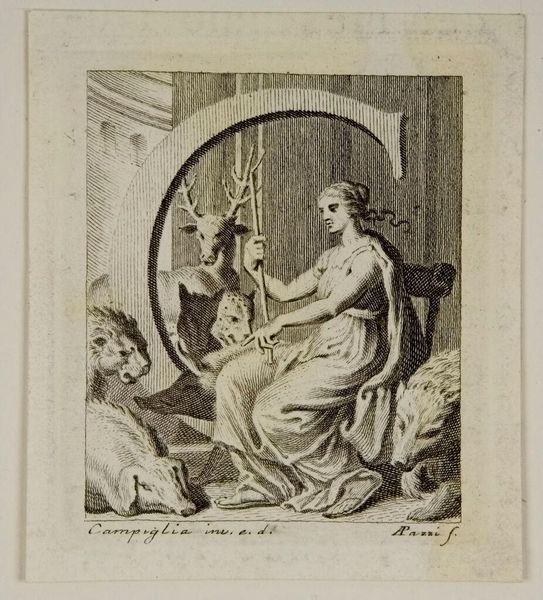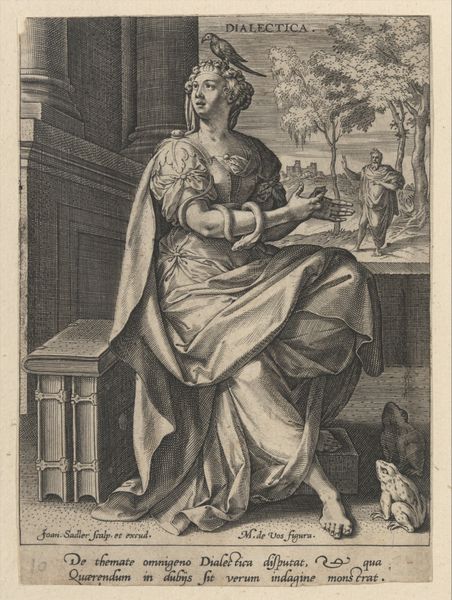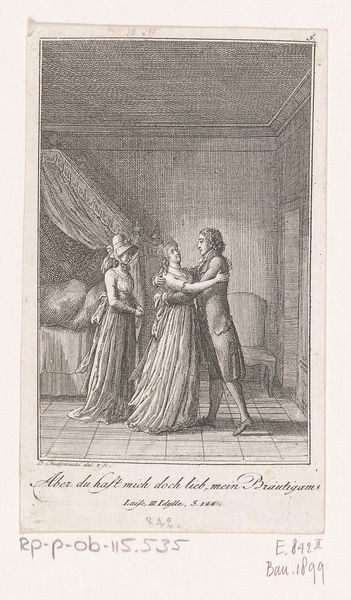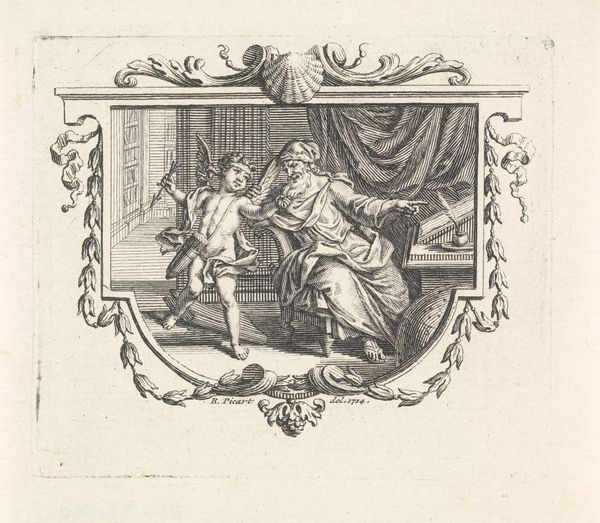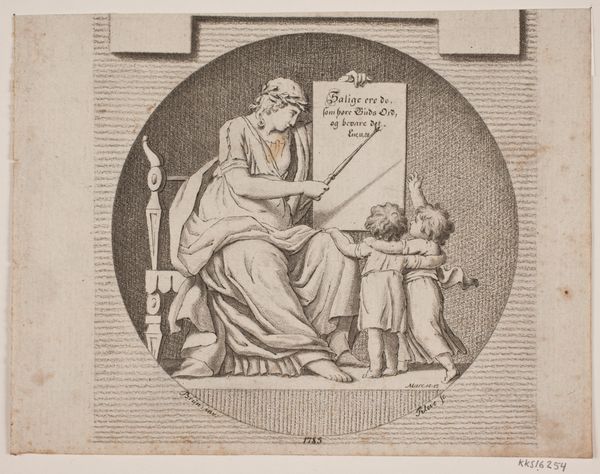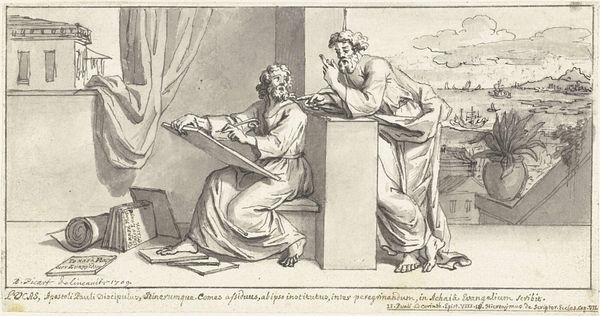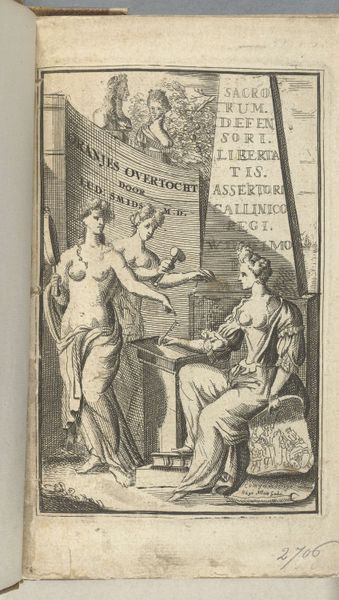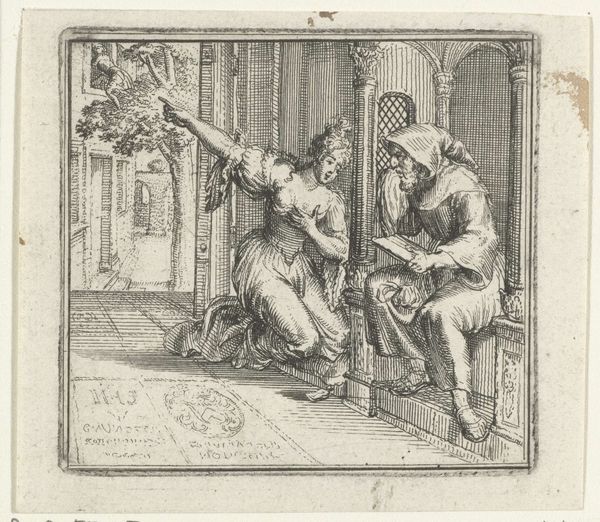
print, engraving
# print
#
figuration
#
genre-painting
#
northern-renaissance
#
engraving
Dimensions: 177 mm (None) (None)
Curator: Pieter van der Heyden created "The Carefree Peddler" sometime between 1586 and 1589. It’s an engraving, currently held at the SMK, the Statens Museum for Kunst. What are your first impressions? Editor: It strikes me as rather tense! There's this odd circular composition framing a somewhat unhappy scene. The contrast between the serene woman and the flustered peddler is quite something. Curator: Indeed. It presents a morality lesson about deception. The woman, likely a bride, appears composed and innocent, while the peddler with his box of goods seems agitated, almost frantic. The text inscribed around the image further enhances the message. Editor: It’s a powerful illustration of social dynamics at the time. This engraving not only serves as art but also comments on economic exchanges and potentially exploitative practices. Is the peddler profiting off the bride's desire for adornment? Curator: Precisely. We have here symbols galore, the circle for completeness, the bride as symbol of purity versus the disheveled peddler. What meanings were these images triggering for viewers then? I'd venture to say it evoked feelings of both mistrust, of the merchants, but perhaps even of a kind of societal unease over perceived superficiality, symbolized by the bride’s adornments. Editor: Right, and consider the wider context. Printmaking democratized images. "The Carefree Peddler" would have circulated widely, amplifying these messages about morality and societal expectations, directly engaging with emerging mercantile anxieties. The choice of engraving specifically speaks to that practicality. Curator: Yes. There's a definite connection to Northern Renaissance interests here. Think of how genre painting elevated everyday life. Editor: Exactly! Even down to the detail of the man's knife, meant for show rather than a practical item—we can tell Van der Heyden is speaking to a wider moral message by contrasting his franticness and her repose. It's meant to get you thinking. Curator: An apt observation! I’d add it urges us to reflect critically on the choices we make, our own aspirations for happiness, even if we might find a different take on it. Editor: Definitely. Even across the centuries, this piece of art still provides the language for important contemporary cultural discourses on identity.
Comments
No comments
Be the first to comment and join the conversation on the ultimate creative platform.

